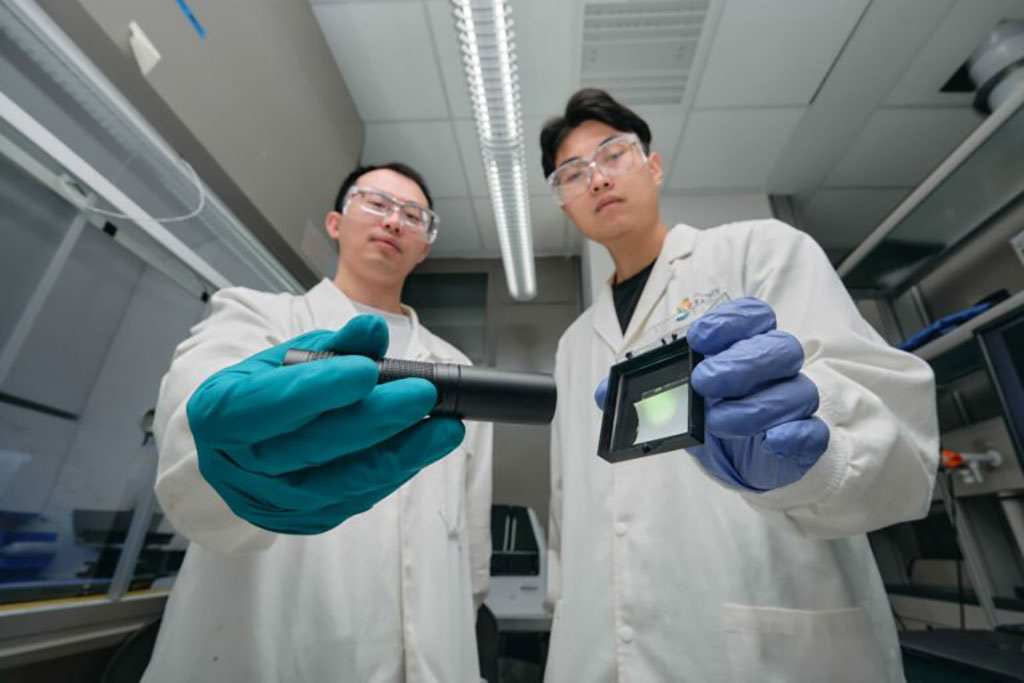Novel Scintillating Material Produces Higher Resolution X-Ray Images with Ultralow Radiation
Posted on 31 Aug 2023
Scientists around the globe are in constant search of advanced scintillators that offer heightened sensitivity at reduced costs and simpler manufacturing processes. Many of the potential alternatives have involved lead-based compounds, which not only pose toxicity concerns but also exhibit stability issues that limit their practical viability. Now, a multidisciplinary research team is actively engaged in developing novel scintillation materials tailored for X-ray imaging applications. These materials light up or "scintillate" upon exposure to X-rays passed through them. The patterns of light generated by these scintillation materials result in the creation of images that reveal complex details required from the examined specimen.
Researchers at King Abdullah University of Science and Technology (KAUST, Saudi Arabia) are exploring the capabilities of lead-free materials that exhibit chemical stability, pose no toxicity risks, and can be readily processed. Surprisingly, the researchers discovered the remarkable X-ray responsiveness of organocopper halides—a class of compounds. These organocopper halides exhibited outstanding characteristics, including high light yield and an impressively low detection limit. Notably, one of the major technical challenges faced by the team was to effectively integrate these new materials into uniform scintillator screens. After extensive experimentation, they successfully combined these halides with an organic polymer, yielding an X-ray imaging screen with an extraordinary scintillation level. So far, this screen has one of the highest values reported for scintillation materials based on organic metal halides.

In related work, the researchers also developed other copper-based halide scintillating compounds. Leveraging their discoveries, they fabricated two types of their scintillators into nanorods and nanoparticles. These materials similarly exhibited ultrahigh yields and remarkably sharp spatial imaging resolution. This resolution outperforms currently available commercial systems by 150% and exhibits notably enhanced homogeneity compared to screens built using other polymer-powder mixtures. Another significant achievement was their ability to detect X-rays at exceptionally low levels—between 55 and 92 times lower than the standards for typical medical X-ray examinations. This achievement holds the potential to significantly minimize X-ray exposure and the associated risks for patients, provided these new scintillators can be seamlessly integrated into established commercial technologies. Moreover, the inherent low toxicity of these lead-free compounds can increase safety for workers engaged in screen production and operation.
The researchers achieved success in enhancing the performance of the compounds by reducing the sizes of the scintillating particle from micrometers to nanometers. Furthermore, all these scintillators demonstrate minimal scattering of incident X-rays and self-absorption of energy—challenges that hampered earlier efforts to develop viable scintillators. The research group now aims to explore the commercial potential of their breakthroughs and showcase the applicability of their findings in nondestructive testing scenarios, where X-ray transmission through materials can assess their structural integrity and identify potential flaws. Additionally, they aim to tackle the complex task of fabricating larger area screens, sized to accommodate real-world applications.
“These ground-breaking innovations with outstanding image resolution and brightness have the potential to revolutionize medical, industrial and security applications, while overcoming limitations and challenges faced by earlier attempts,” said Omar Mohammed who led the research. “Based on these findings, we believe that the future of X-ray technology appears brighter and more promising.”
Related Links:
KAUST














